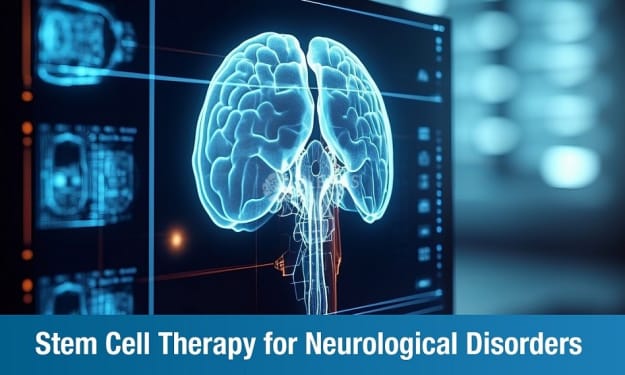Raising a child with Cerebral Palsy: A guide for parents and caregivers
Plexus

As parents of a child with Cerebral Palsy (CP) your internet searches will probably reflect your worries and fears. But as you sit down and take in all the information you can, your anxiety doesn’t reduce. You may still be overwhelmed, concerned, and perhaps even dejected. So, we are here to allay some of your fears, and answer some of the most commonly asked queries from parents and caregivers raising a child with CP.
At the outset, we must tell you that a CP diagnosis isn’t the end of the world. Neither for your child, nor for you. Look at it as just a minor setback on a journey that will be just as beautiful as you had envisaged when you had first held your little one in your arms.
Remember, CP is a non-degenerative disorder. Its symptoms do not worsen or aggravate with time. Nevertheless, timely diagnosis and regular therapy can significantly improve the quality of life of the child with CP, making them as independently mobile as possible.
What is Cerebral Palsy?
Cerebral Palsy (CP) is an umbrella term that defines a group of disorders that impair a child’s posture, proprioception (sense of balance), and mobility. It is caused by abnormal brain development or irreparable damage to the immature and developing brain (during pregnancy or shortly after birth).
The severity of the symptoms and motor issues may vary from child to child, depending on how, where and when the damage/injury occurred to their developing brain. It may affect the whole body, or just be limited to one or two limbs, or one side of the body.
First step: adjusting to a CP diagnosis
One of the most important things to keep at the forefront of your thoughts is, a CP diagnosis does not define nor hinder your child’s individual potential. The sky is still the limit!
Having said that, it is OK to feel upset, anxious, and even shattered. What’s important is to not let your fears and anxieties affect your child and their confidence. There is no harm in even seeking professional guidance to come to terms with your own grief.
Understanding the types of CP
CP results in impaired muscle tone and movement. The brain’s ability to move muscle is significantly impacted. This can in turn cause flaccid muscles (spastic), poor motor coordination, impaired reflexes, impaired balance, incorrect posture, involuntary movements, etc. The severity of mobility challenges depends on the type of CP. Let’s look at the different types of CP below:
Spastic: This is the most common type of CP. It is characterised by jerky movements as well as tight and overly-toned muscles. Tight and stiff muscles make controlling motor movements extremely challenging. Children/adults with this type of CP find it difficult to walk, and can tend to have a jerky and awkward gait.
Dyskinetic: In this type of CP, the child/adult struggles with involuntary movements in the muscles. The muscle tone may vary from flaccid and loose to stiff and overly-toned. In such cases, the individual finds it very difficult to control their movements.
Ataxic: This type of CP affects balance and is invariably limited to the legs. Individuals with this type of CP may walk with their feet spread wide in order to maintain balance. It is known to interfere with the person’s ability to walk as well as affects the performance of fine motor activities like grasping, writing, etc.
Hypotonic: This type of CP greatly reduces muscle tone, making them overly flaccid and floppy. The weakened muscles affect posture and make it difficult to sit up straight. Children with Hypotonic CP may face difficulty in breathing, speaking, etc. They may also have poor reflexes and exhibit abnormalities in walking.
In some cases of CP, patients experience symptoms of more than one type of CP. Invariably, it is a combination of spastic and dyskinetic CP. Such a diagnosis is called Mixed Cerebral Palsy.
Effect of CP on body parts
CP can present differently in each child. Some common terms you may come across are:
Hemiplegia: One side of the child’s body is affected (arm or leg)
Diplegia: One pair of limbs is affected (either hands or legs; in most cases of diplegia, the child’s legs are affected)
Quadriplegia: Both arms and legs are affected; this type also invariably affects the child’s trunk
Taking charge of your child’s development
No study material, no toy, no learning resource is as vital as YOU, the parent/caregiver. You have the ability to help your child reach their full potential. They learn through your actions, words, and emotions.
So, model the behaviour you want them to emulate. Be their friend and confidant. Show them what it means to be strong and brave. Nurture their interests and passions.
Some things you can start with right away are:
Daily routines: Involve them in your everyday routines and chores. Ask them to help with laundry, bake a cake together, read books, sing songs, play i-spy games, etc.
Maintain bedtime and mealtimes: Children thrive on routines and rhythms. A predictable routine offers them more control and autonomy over their lives. This also allows them to be calmer and well rested.
Get to know your child: Your child is a whole different person. They have their own characteristics and personality traits. Make time to get to know them. Learn about their likes and dislikes. Offer hugs whenever you can. Also offer opportunities to self-regulate. Help them feel safe and secure.
Play with your child: This is the most effective way to engage and encourage them. Not to mention the fun you will also have along the way.
Keeping up with nutrition
Maintain a healthy diet and nutritional intake
Slow weight gain and growth are no longer considered a normal part and parcel of having CP. Chances are your child is not getting adequate nutrients and is probably using more energy than they are consuming. Your child may also experience difficulty in chewing and swallowing.
As you keep up with doctor’s appointments and therapy, you may forget the sheer power of a balanced diet. Children with CP can suffer from severe muscle damage and degeneration. A balanced diet rich in good fats, proteins, calcium, iron, minerals, vitamins, etc. is imperative.
There are numerous benefits of good nutrition for children with CP. Some of them include:
Improved cognitive ability
Improved circulation
Improved growth and weight
Better functioning immune system
Faster recovery post-surgery/illness
Having lesser mood swings
The A-Team!
Children with CP require constant care, follow-ups, and therapy. Below is a list of medical practitioners and specialists who must be involved in your child’s care:
General Practitioner: To oversee general wellbeing
Gastroenterologist: To diagnose and manage digestive issues
Neurologist: To diagnose and manage neurological afflictions
Orthopaedic specialist: To diagnose and manage bone and muscle related conditions
Respiratory paediatrician: To diagnose and manage pulmonary functions and breathing issues
Ophthalmologist: To diagnose and manage eye related conditions
Nutritionist: To assess, support, and oversee nutritional intake
Neuropsychologist: To assess and support emotional and cognitive wellbeing
Occupational Therapist: To enable independence and better functioning in daily life
Orthotist: For assistive treatment involving orthotics, prosthetics, splints, etc.
Physiotherapist: To manage and maximise motor skills and mobility
Speech and Language Pathologist: To assess and diagnose swallowing difficulties and manage communication challenges
Stem Cell Therapy for Cerebral Palsy
Stem cell therapy targets the damaged areas of the brain and promotes regeneration. At Plexus, we use mesenchymal stem cells (MSCs) and umbilical cord blood stem cells in alleviating the symptoms of cerebral palsy and improving the overall quality of life of your little one.
Our centers in Bangalore and Hyderabad are fully equipped with state-of-the-art infrastructure that provides advanced stem cell therapy that improves motor function, cognitive abilities, and overall well-being. With over 35 years of clinical experience, our team of stem cell specialists have brought smiles to the faces of 5,00,000 children and their families.
Features of Mesenchymal Stem Cell Therapy
Derived from various tissues, including bone marrow, adipose (fat) tissue, MSCs typically exhibit anti-inflammatory and immunomodulatory properties that promote tissue repair and reduce inflammation in the brain.
MSCs are known to stimulate neuronal growth, enhance neuroprotection, and support the regeneration of damaged tissues.
At Plexus, we offer only the best treatment for your child with Cerebral Palsy. Our team of experienced, skilled, and empathetic specialists will significantly improve the quality of life your child can lead, in spite of a CP diagnosis. Our rehabilitation program includes:
Stem cell therapy
Physical therapy
Occupational therapy
Reflex integration therapy
Developmental therapy
Early intervention therapy
Postural training
Stretching exercises
Gait training
Activities of daily living training
Pre-academic skills training
Cognitive rehabilitation therapy
Hand function training
Handwriting training
Assistive and adaptive technology training
Corrective splinting
Contracture release therapy
Constraint-induced movement training
Mirror therapy
We understand the emotional upheaval you and your family may be facing following a CP diagnosis. We would like to assure you that nothing short of the best in care will be provided to your child. Remember, Cerebral Palsy is not degenerative. There is always hope. Tomorrow can always be brighter than today!
Book an appointment with us today.
WhatsApp +91 89048 42087
Call +91 78159 64668 (Hyderabad) | +91 82299 99888 (Bangalore)
***
TEN affirmations for parents of children with CP
CP does not define my child
CP does not disable my child’s personality
My child is always loved and safe
My child is stronger than a CP diagnosis
My child has so much to offer
I have so much to offer to my child
I will always make the sunshine in my child’s life
I am strong for my child
My child’s disability allows them the freedom to be unique and different
My child’s disability is not a handicap
About the Creator
Enjoyed the story? Support the Creator.
Subscribe for free to receive all their stories in your feed. You could also pledge your support or give them a one-off tip, letting them know you appreciate their work.





Comments
There are no comments for this story
Be the first to respond and start the conversation.